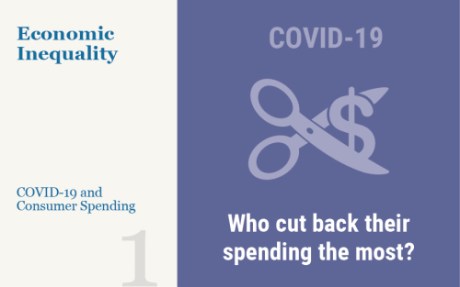Racial and Income Gaps in Consumer Spending following COVID‑19
This post is the first in a two-part series that seeks to understand whether consumer spending patterns during the COVID-19 pandemic evolved differentially across counties by race and income. As the pandemic hit and social distancing restrictions were put into place in March 2020, consumer spending plummeted. Subsequently, as social distancing restrictions began to be relaxed later in spring 2020, consumer spending started to rebound. We find that higher-income counties had a considerably steeper decline and a shallower recovery than low-income counties did. The differences by race were also sizeable as the pandemic struck but became considerably more muted after summer of 2020. The decline and the recovery until the end of summer were sharper for majority-minority (MM) than majority nonminority (MNM) counties, while both sets of counties showed similar growth in spending after that. The second post in this series highlights the goods and services that were most adversely affected (or “constrained”) by the pandemic. Then, differentiating households by income, that post explores which households were more exposed to these pandemic-constrained expenditure categories.
